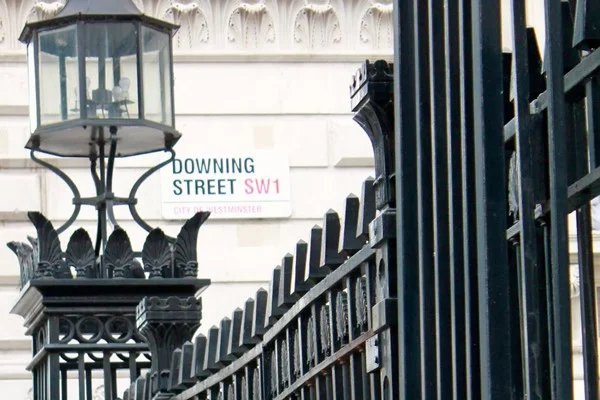Overhaul of Planning Laws Abandoned by Ministers Following Criticisms
Reports from Westminster suggest that an overhaul of planning laws to speed up the construction of new homes in England is set to be abandoned by the government. In the face of strong criticism from a number of influential figures, the “Project Speed” reforms could either be scaled down or reversed entirely.
The proposed planning laws were outlined in the Queen’s speech earlier this year as part of the government’s pledge to hit a new target of 300,000 homes built annually in England. With other measures to go ahead, they would speed up and simplify the system for obtaining planning permission for new developments, with the potential to increase the number of homes being built by more than 30%.
Campaigners and critics hit back at the controversial proposals, which they said would result in the “suburbanization” of important green areas of the country. All while failing to make an impact on the UK’s affordable housing shortage, which is already making it impossible for most private renters to get on the housing ladder.
A victory for common sense
While the government has yet to confirm the rumours, speculation is rife that the proposals will be abandoned due to strong resistance from MPs and voters in the South of England. If the proposals were to go ahead, they would prevent homeowners from formally objecting to planning applications while giving councils mandatory house-building targets.
Speaking on behalf of CPRE, deputy chief executive Tom Fyans called the expected reversal “a victory for common sense”, stating that all indications suggest “some of the most damaging proposals of what was a top-down developers’ charter have been rightly binned” and dubbed the move a “victory for common sense”.
“The government must not shy away from overhauling a tired planning system to make it fit for the multiple challenges of the 21st century,” he continued.
“Local communities need a stronger right to be heard in local decisions; brownfield sites must automatically be developed first to help protect local green spaces and our green belts in the fight against climate change, and young people and key workers desperately need more funding for rural affordable homes.”
Refusing to confirm or refute the rumours, the Ministry of Housing, Communities, and Local Government simply stated that further information would be published “in due course”.
Concerns for green space development
When the government first announced the initiative, it was stated that the overhaul would lead to “simpler, faster procedures for producing local development plans, approving major schemes, assessing environmental impacts, and negotiating affordable housing and infrastructure contributions”.
However, critics quickly hit back by labelling the potential reforms an “utter disaster” in the making, warning that the impact on green spaces around England could be devastating.
“We will see a lot more houses on greenfield land and in areas of outstanding natural beauty. The people in the north of England need these green spaces for their wellbeing,” said Debra McConnell, CPRE chair.
According to Shelter, there are now more than 1.1 million people on waiting lists for social housing in England alone.
Which Are the Best Places in the UK for Property Investments?
Even today, with demand for desirable properties at an all-time high, there is no such thing as a safe haven for landlords. Nevertheless, research conducted by Aviva suggests that as much as 10% of the adult population in the UK could be planning an investment property purchase over the next 12 months.
Anyone looking to get into the buy-to-let market will understandably have a robust and reliable ROI as their top priority. Accelerating house prices and tax hikes are making it more difficult than ever to turn a profit as a landlord in the UK.
Nevertheless, those who invest in the right kind of property in the right place have every opportunity to generate strong and reliable annual profits. According to the latest figures published by Coulters Property, there are some corners of the UK that are offering BTL investors average returns in the region of 3%, adding up to an annual profit of over £6,000 in some areas.
According to Coulters Property, these are currently the 10 best places in the UK to invest in a BTL property, on the basis of the potential annual profits generated:
| Rank | City | Profits Per Year (£) | % ROI |
| 1 | Preston | £5,256 | 2.98% |
| 2 | Coventry | £6,033 | 2.74% |
| 3 | Glasgow | £4,836 | 2.67% |
| 4 | Swansea | £4,478 | 2.54% |
| 5 | Dundee | £3,965 | 2.47% |
| 6 | Manchester | £5,015 | 2.14% |
| 7 | Paisley | £2,746 | 2.12% |
| 8 | Leeds | £4,339 | 1.90% |
| 9 | York | £5,405 | 1.85% |
| 10 | Stoke-on-Trent | £2,481 | 1.73% |
Preston came out as the surprise winner in the rankings, where average property prices are currently hovering around £176,378. With average monthly rents coming out at £981 per calendar month, this translates to a healthy £438 profit per month and £5,256 per year.
Cities in Scotland performed particularly well in the rankings, with the likes of Paisley, Dundee, and Glasgow all generating healthy returns on BTL investments.
Notable in its absence is London, which has traditionally been seen as the Holy Grail for investors looking to generate the biggest possible profits on their BTL investments. However, as property prices across London continue to climb to astronomic all-time highs, it is becoming increasingly difficult for landlords to generate viable profits, even where monthly rents are equally enormous.
Responsibility for Reaching Net-Zero Targets Falls with the Private Sector
A report published by the Climate Change Committee in June set out a series of urgent climate change risks while outlining opportunities for their mitigation. The report concluded that policy initiatives currently in place will achieve no more than 20% of the required reductions in emissions by 2050.
Consequently, there are those who now believe it is the responsibility of the people operating within the private sector to front the transition to sustainability and ultimately achieve net-zero targets.
“The past year has seen a host of pledges, promises, and policies emerge to incentivize the transition to the green economy. It is a step in the right direction on paper, but the practical implication of each is difficult to measure,” writes Ding Li, Senior Strategy Consultant at Longevity Partners.
“There are a number of competing guidelines and reporting frameworks for reaching net-zero carbon in the real estate sector, each with differing methodologies and timeframes, making it difficult to work out what these commitments mean.”
“Organisations should proactively audit their operations to set their own carbon reduction targets. It is becoming increasingly straightforward for businesses to begin their journey to net zero. Adopting best practices in ESG will always serve as an advantage in the long term, as regulation and legislation will catch up regardless.”
The role of the real estate sector
It is estimated that at least 30% of all CO2 emissions generated annually originate from the built environment. A report from the CCC suggests that in the UK, 17% of all greenhouse gases are produced by buildings. In order for net zero to be reached by 2050, the UN Environment Programme has stated that building emissions will need to be reduced by at least 50% by the end of the current decade.
“Policymakers and legislation will demand this sooner or later regardless of business practices; therefore, it is strategic to pivot towards net zero pre-emptively,” writes Ding Li.
“The results of net-zero measures equally generate significant financial returns in the long term. Property developers managing environmental and regulatory risk will drive greater value as they are taking a comprehensive and strategic approach to their portfolios.”
“Indeed, 88% of investors believe companies that prioritise ESG initiatives represent better long-term return prospects. And as a result, assets in sustainable investment products in Europe are forecast to outnumber conventional funds by 2025.”
Sustainability is a priority for most
A poll conducted by JLL on 1,000 senior executive leaders worldwide found that sustainability is one of their top priorities going forward. A further 83% stated that they were looking into ways to innovate and accelerate their sustainability strategies, having acknowledged real estate sustainability as a key priority.
Just 6% said that they currently saw themselves as ‘leaders’ in the field of monitoring and measuring the environmental impact of their properties.
“This decade is seen as the tipping point for climate change. With the built environment responsible for nearly 40% of global carbon emissions, reducing the environmental impact of real estate is a key priority for investors and corporate occupiers,” writes JLL.
UK Property Finance Completes a £2.25m Bridging Loan
A client approached UK Property Finance seeking a bridging loan of £2.25 million to cover the purchase cost of investment properties, carry out refurbishments, and later sell the developed properties for a profit.
The client wanted to take funds out of his unencumbered buy to let London property, although the tenants of the property had COVID-19. The client needed to move this forward quickly; therefore, we applied with Hope Capital, who agreed to carry out a drive-by valuation.
In order to meet the client’s deadline, it was paramount that all parties worked together to answer all points quickly and efficiently. This was completed by members of staff at UK Property Finance, Hope Capital, and the lender’s legal team, Freeth’s.
Swift turnaround
Laura Carr, Head of Underwriting at Hope Capital, commented: “It’s always a pleasure working with our friends at UK Property Finance and Freeth’s. Swift and transparent communication was key to ensuring we could get this deal across the line in time. A huge thank you to Lisa and Sian at UK Property Finance, Luke at Freeth’s, and everyone else involved who helped us pull this case off so quickly and efficiently.”
Sian Taylor, Processing Executive at UK Property Finance, commented: “Working alongside the team at Hope Capital was a joy; they were very efficient and worked quickly to resolve any issues that arose during the process. The client wanted fast finance, and that is exactly what was delivered by the team at Hope Capital and everyone else involved. The smooth process delivered by Hope Capital was a relief to the client and to the processing team at UK Property Finance.”
If you require property finance through a bridging loan, contact the team at UK Property Finance for a quick and efficient solution.
Way Home Launches a New 5% Deposit Partial Home Ownership Scheme
First-time buyers looking to get on the property ladder without a conventional mortgage now have the option of an innovative new scheme from Way Home. Albeit, with a significant stamp duty catch and major restrictions on subsequent home improvements,
The new scheme will enable first-time buyers to purchase a property with a 5% deposit without having to obtain a mortgage. Announcing the initiative, Way Home said it will form partnerships with home buyers on their purchases, with the buyer responsible for paying a deposit of 5% to 30% and the company covering the rest of the costs.
After this, the buyer pays a monthly rent to Way Home on the basis of the outstanding amount, rising annually in accordance with inflation. The buyer will also have the opportunity to pay lump sums to Way home to increase the share of the property they own over time.
It is essentially a slightly new take on the classic rent-to-buy model, where the ‘buyer’ makes a continuous series of payments to increase their ownership stake in the property. But with 5% deposit mortgages now available on the High Street, under what circumstances would a rent-to-buy agreement with Way home be preferable?
A case of qualification criteria and loan size
Quizzed on the benefits of the scheme, Nigel Purves, chief executive of Way home, says applicants will be able to borrow much more than would be possible with a conventional lender.
With most high-street loans, first-time buyers are restricted to no more than around 4.5 times their annual income. With the Way home scheme, they will have the opportunity to move into homes valued at up to eight times their annual income.
This could subsequently give first-timers the buying power to move into much more desirable homes rather than settle for basic ‘ starter homes’ on the basis of affordability.
According to Way home, properties eligible under the scheme will be priced between £200,000 and £500,000, in a guaranteed good state of repair, and will require no major building works or alterations. They will also be located exclusively in desirable areas in 41 locations across the country.
“If you can get the size of home you want in the location you want with a mortgage of four times your income, we tell people that, obviously, they should take advice, but that is something they should probably do if they can,” commented Nigel Purves.
“The problem is that most of our customers are living in areas where properties are six to seven times their income or more, and the only way to bridge that gap is by saving for decades or having family members able to help you, which of course most people don’t have.”
Terms and conditions apply
As for the catch, various restrictions will be placed on those purchasing properties under the Way home scheme. For example, major renovations and structural adjustments to properties will not be permitted, such as putting in a new kitchen or building a conservatory.
In addition, buyers will face top-band stamp duty liability, the same as if they were purchasing a second home. In addition, Way home will only allow its customers to build a maximum 40% stake in the property they live on.
“We expect there will be some people who see it as a way to access a property now that they would only have been able to get with a mortgage in ten years’ time: they will chip away at the equity and their salary may increase, and eventually they will be able to get a conventional mortgage and buy us out,” Purves explains.
“Others we think will find during that time period that they might want to change location, they might want to move to somewhere less built-up, maybe where their income to value ratio is lower, and therefore they will ask us to buy their stake back off them, and they will go and buy a home somewhere else.”
Is it Possible to Cover Your University Costs as a Landlord?
It may appear a bizarre concept on the surface, but student BTL mortgages do exist, the idea being that with a ‘student mortgage’ you purchase a property with no down payment and earn money by renting it out to your friends.
Only because it is technically possible does not necessarily make it an appropriate pathway for most students; covering living costs is a real concern for most university attendees, but purchasing a property to rent out is not without its complexities.
An interesting proposition
Several small lenders have put together a range of innovative products aimed exclusively at students. Examples of this include Bath, Loughborough, and Vernon building societies, all of which provide students with the opportunity to buy a home with no deposit required.
Those taking advantage of the products will subsequently be able to rent space in their properties to other students in order to cover the mortgage payments.
‘Mortgages and students are not usually two things that you’d associate as a package,’ commented L&C Mortgages associate director, David Hollingworth.
‘Students are unlikely to have much if any income and therefore will always struggle to meet the primary requirement of a mortgage lender in demonstrating affordability to take on a mortgage,’
‘They also aren’t likely to have a deposit to use a buy-to-let mortgage, let alone the minimum income or homeownership that many lenders would expect,’
‘These issues have seen some lenders offer students a chance to buy a property rather than rent, but with the help of their parents.’
How the scheme works
Eligible applicants are offered a loan to purchase a property with an LTV of 100%, meaning no deposit is required. A guarantor is required to co-sign the mortgage agreement along with the student, typically a family member.
The funds can subsequently be used to purchase a property and rent out spare rooms to friends or other students. From there, monthly payments are collected to both cover the mortgage repayments and make money to cover the owner’s living costs.
‘’The mortgage amount is based on the rental income the property could yield from letting out the spare rooms.
‘The guarantor will be on the mortgage deeds but not on the property deeds, and their income can be used to help the application,’ explains Chris Sykes, associate director and mortgage consultant at Private Finance.
‘If no deposit is available, then the guarantor can either put money on account with the lender to the value of 20 per cent of the mortgage or they can use their own home as security for the loan.’
An attractive initiative, but must be carefully considered from a longer-term perspective. The ongoing costs of homeownership are at an all-time high in the UK, as are those of running a BTL business of any kind.
Anyone interested in becoming a student landlord is therefore advised to seek independent broker support in order to establish their suitability and determine whether it is something they can realistically afford.
Exactly How Much Did Boris Johnson Borrow to Refurbish His Downing Street Flat?
It is no secret that Boris Johnson chose a rather questionable time to refurbish his luxury London flat. While most people across the UK were struggling to make ends meet, the Prime Minister raised eyebrows by spending a small fortune on predominantly unnecessary adornments.
The exact amount he borrowed to pay for the refurbishments has been revealed: an eye-watering £52,000. Having been questioned on where the funds came from, the Conservative Party has now admitted that Boris Johnson “personally settled the costs incurred by Lord Brownlow”, a party donor who helped finance the work.
Having previously described what was once the home of Theresa May as a “John Lewis furniture nightmare”, his wife, Carrie, made no secret of her disdain for its décor. Disdain was so severe that the pair thought it sensible to hire top designer Lulu Lytle to oversee its overhaul, which, according to insiders, included £840-a-roll golden wallpaper.
Not that such a high price guarantees quality; as rumour has it, the elaborate wall covering has peeled away from its surface.
A painful price paid by the taxpayer
Documents have now confirmed that the loan repaid by Boris Johnson came alongside an additional £28,600 paid by you, the UK taxpayer. Tasks including painting and sanding his floorboards were funded straight from the pockets of the British public, leaving sour tastes in the mouths of many.
Published financial accounts from the Conservative Party indicate a “bridging loan” of £52,802 repaid by Johnson out of party funds last summer. Lord Ludlow would then go on to cover these costs, but no declaration was made to the Electronic Commission.
Even though the law clearly states that all donations and loans to political parties of five figures or more must be reported,
“All reportable donations to the Conservative Party are correctly declared to the Electoral Commission, published by them, and comply fully with the law. Gifts and benefits received in a ministerial capacity are, and will continue to be, declared in government transparency returns,” was the response from the conservative Party, clearly refusing to acknowledge any wrongdoing.
Questions remain as to how the refurbishment was originally funded and how much the project cost in total. Despite the declaration from the Conservative Party, numerous reports suggest that he may have spent more than £200,000 breaking into his new flat.
Again, all at a time when the rest of the country was struggling to make ends meet and facing a terrifyingly uncertain financial future.
Why July 1st Was Not Necessarily Stamp Duty Doomsday
The July 1st stamp duty deadline was seen as a black mark on the calendar by many prospective homebuyers. As of this date, the full stamp duty holiday officially came to an end, having been extended from its initial March 31 deadline.
Consequently, thousands rushed the completion of their property purchases to take advantage of potential savings of up to £15,000. But what many may not realise is that there is still a good degree of tax relief available for a sizeable proportion of prospective homebuyers.
Understanding the changes
The original stamp duty holiday, introduced last year in June, eliminated stamp duty liability for buyers of properties valued at £500,000 or less. Prior to this, the threshold had stood at just £125,000.
As of July 1, the £500,000 nil band threshold was decreased to £250,000. This will now remain in place until the end of September, during which all purchases of properties valued at £250,000 or less will be exempt from stamp duty.
This means that there are still significant savings to be made for the vast majority of home buyers in many regions of the country. Savings worth many thousands of pounds could, to a small extent, augment the skyrocketing costs of buying a home in the UK.
Alterations to stamp duty obligations
As of July 1, the thresholds that applied during the stamp duty holiday were reduced slightly, meaning the following rates now apply:
- £0-£250,000 = 0%
- £250,001-£925,000 = 5%
- £925,001-£1,500,000 = 10%
- £1,500,000+ = 12%
When the September 30 deadline passes and the stamp duty holiday is withdrawn entirely, the same rates as prior to the pandemic will apply:
- £0-£125,000 = 0%
- £125,001-£250,000 = 2%
- £250,001-£925,000 = 5%
- £925,000-£1,500,000 = 10%
- £1,500,000+ = 12%
However, there will still be significant savings available to first-time buyers. Anyone looking to purchase a home for the first time with a value of £300,000 or less will be exempt from stamp duty entirely. For properties valued between £300,001 and £500,000, 5% of the subsequent portion between these amounts will be payable at the time of purchase.
This therefore means that stamp duty liability will remain zero for most first-time buyers in England and Northern Ireland.
Competitive mortgage deals continue
Along with significant savings on stamp duty, highly competitive mortgage deals continue to motivate first-time buyers. Specifically, the widespread availability of 10% and 5% deposit mortgages is encouraging more prospective buyers to make their moves.
The number of 95% LTV products on the market has increased by more than 100% over the past two months. There are now approximately 192 5% mortgage products available on the High Street, up from just 80 in May.
Elsewhere, some lenders are offering fixed-rate mortgages with a 40% deposit requirement and interest rates as low as 1%. Interest rates on higher LTV mortgages are also lower than they have been in some time, but buyers unable to provide more than a 5% deposit are being heavily scrutinised with regard to their financial circumstances and credit history.








